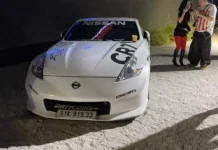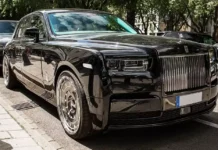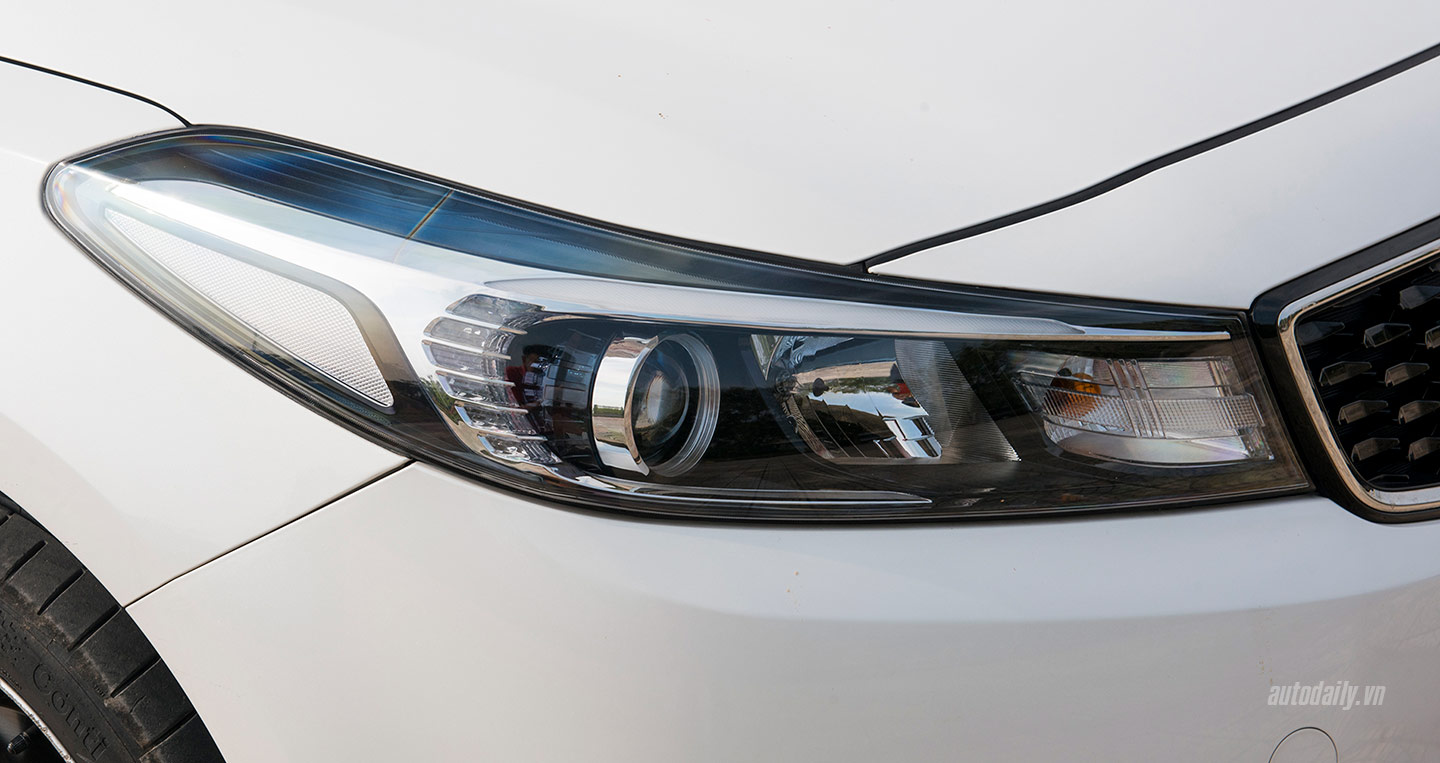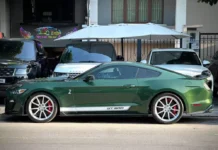In the C-segment of the Vietnamese market, Kia Cerato is one of the two most notable names. In the first 10 months of the year, the sales of this model reached over 4,200 units, only behind Mazda3.
Cerato 2.0AT: 671,000,000 VND
Mileage: 10,000 km
So what are the reasons why many customers trust and choose Kia Cerato? In this article, we will explore the advantages and disadvantages of this model after 10,000 km of use.
Design and styling
Overall, the new Cerato still retains most of the design elements that have contributed to the reputation of the Kia K3. The biggest difference between Cerato and K3 is the front-end design. Kia Cerato features a traditional tiger-nose grille, halogen headlights with projector technology. In addition, the LED daytime running lights are also quite sharp.
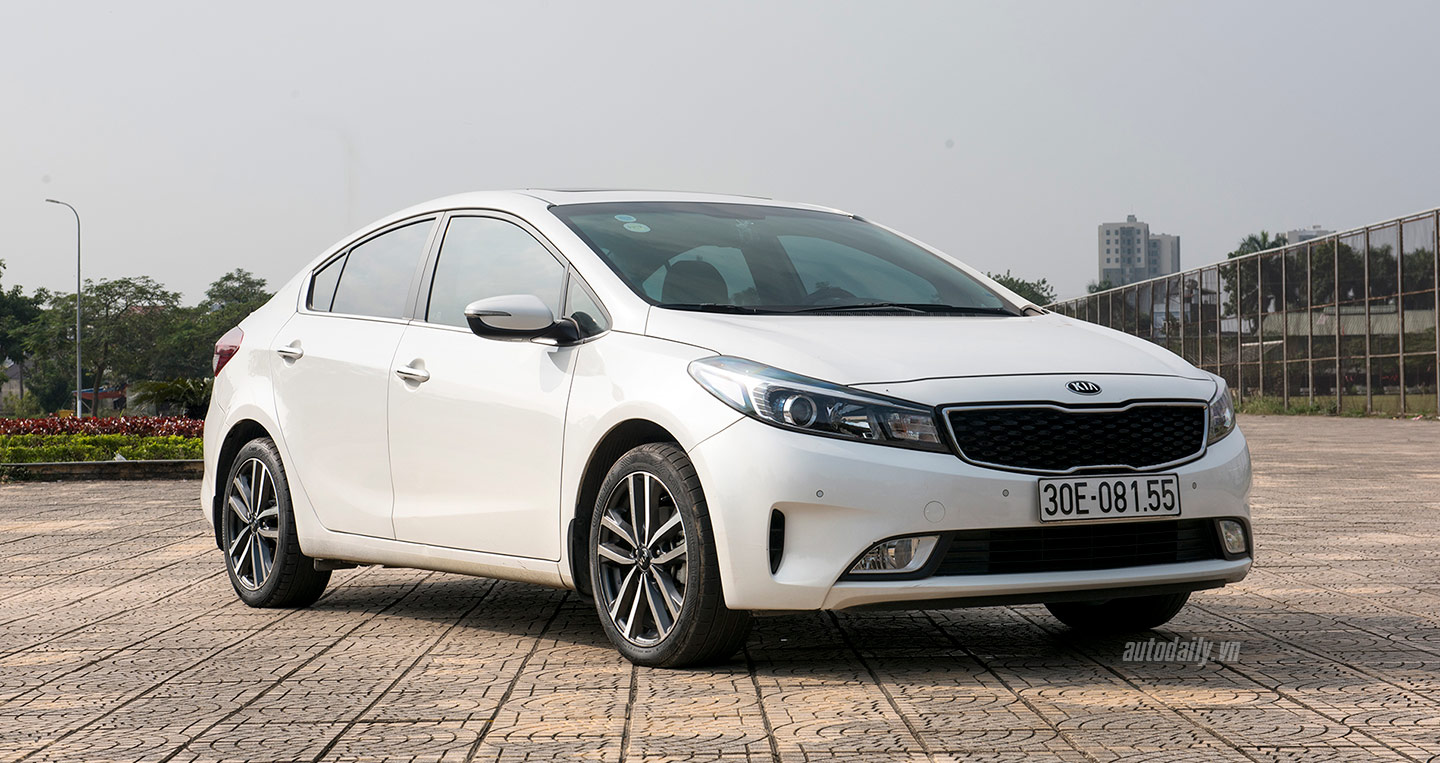 Kia Cerato 2016 after 10,000km of use.
Kia Cerato 2016 after 10,000km of use.
The license plate area is equipped with surrounding sensors, and below are the air intake system and fog lights. The fog lights are positioned lower than the previous generation, which helps to illuminate the road surface better. However, the plastic panel at the front of the car gives a somewhat uncertain feeling.
It must be said that the Cerato is a complete and beautiful car, from the overall design of the front, body, rear, to details such as mirrors, door handles, chrome trims, and even the wheels. However, during use, the wheel trim is probably the most vulnerable part due to the large R17 wheels and relatively thin tires, making it easy to scrape against obstacles on the road. Therefore, when driving in tight spots and encountering obstacles, it is important to be cautious.
 However, during use, the wheel trim is probably the most vulnerable part due to the large R17 wheels and relatively thin tires, making it easy to scrape against obstacles on the road.
However, during use, the wheel trim is probably the most vulnerable part due to the large R17 wheels and relatively thin tires, making it easy to scrape against obstacles on the road.
The trunk of the Cerato opens automatically if you have the key with you and stand about 30-50cm away from the trunk. This feature is quite convenient, however, the trunk lid only pops up and does not open hydraulically, so you still have to lift it up by hand. The trunk also has some inconvenience when you walk around the rear of the car for more than 3 seconds, the trunk lid will unintentionally open and you will have to put effort into closing it again. The fuel cap opening mechanism is also a downside of the Cerato. Each time you open it, you have to press the fuel cap deeply before pulling the lever, and if you don’t press it, you will have to pull the lever 10 times and the fuel cap still won’t come out.
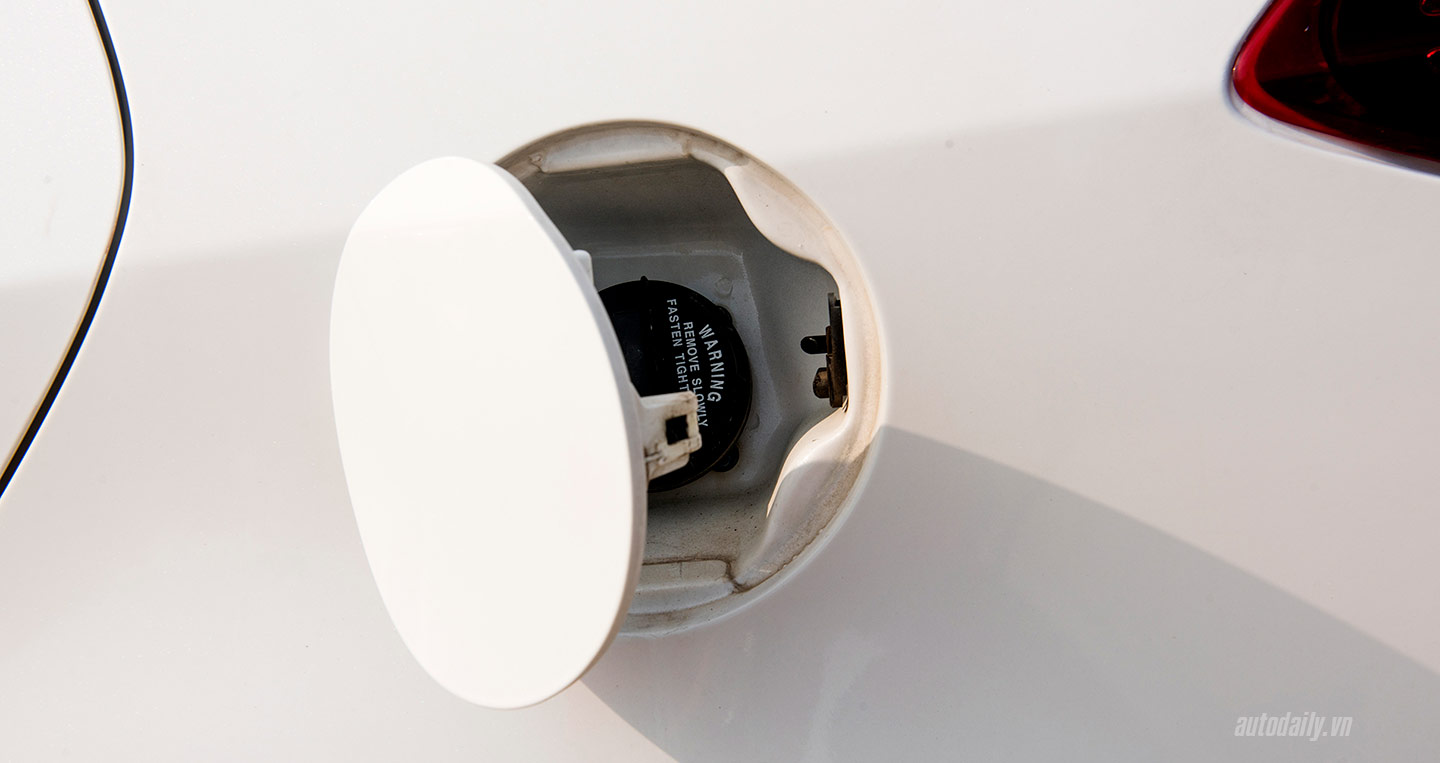
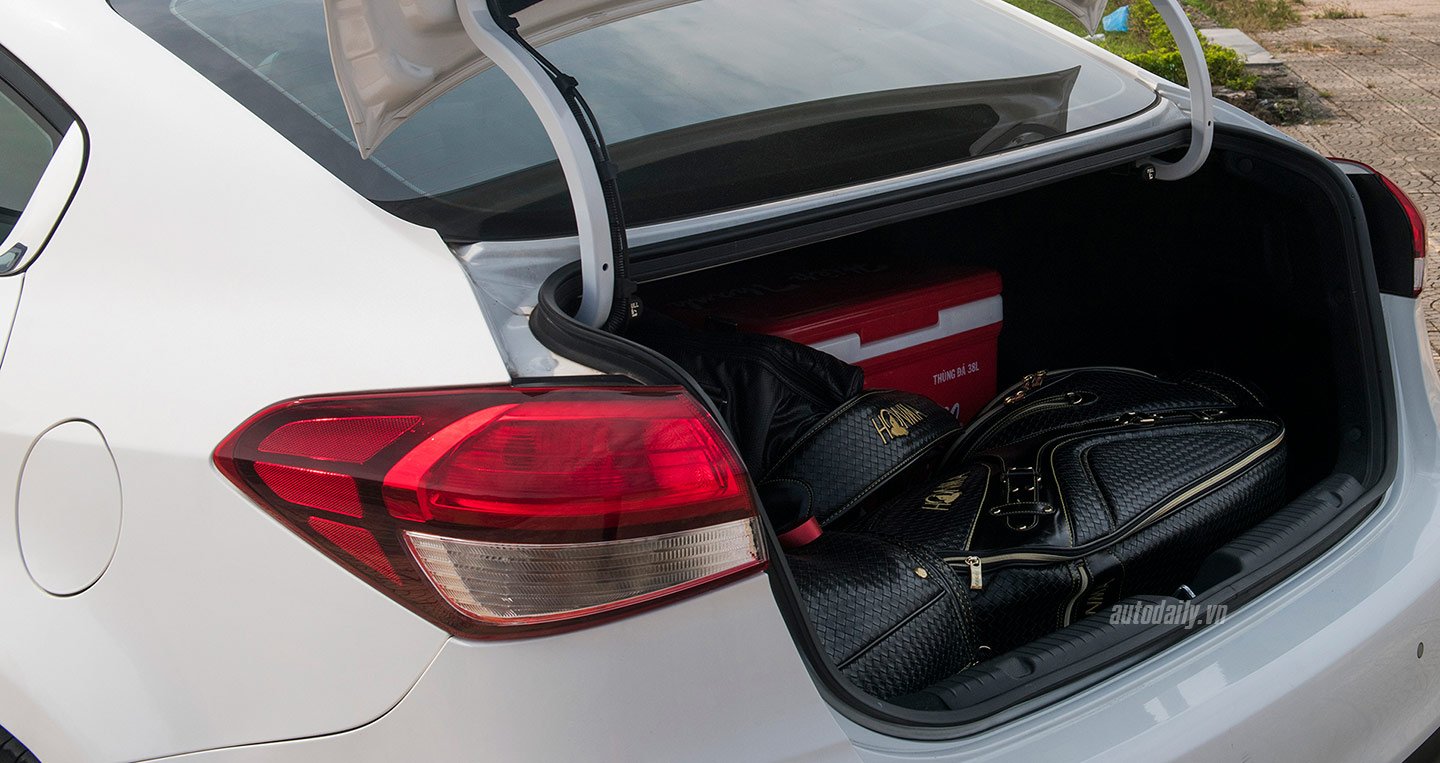 The fuel cap opening mechanism is also a downside of the Cerato.
The fuel cap opening mechanism is also a downside of the Cerato.
Although it has a beautiful design, especially in white paint, the Cerato we tested, after 10,000km, the paint color has faded. It is a somewhat regrettable thing for a beautiful and practical model like the Cerato.
Interior and features
We must affirm that the interior and features of the Cerato have left us extremely impressed. There is ample space for both the front and rear seats, with comfortable seating positions. Although the leather material is not very important, for a C-segment model priced below 700 million VND, it is difficult to demand more. However, once again, the quality of the finishing is regrettable as the headrests of the seats are prone to peeling off the leather cover and it is very difficult to reassemble them.
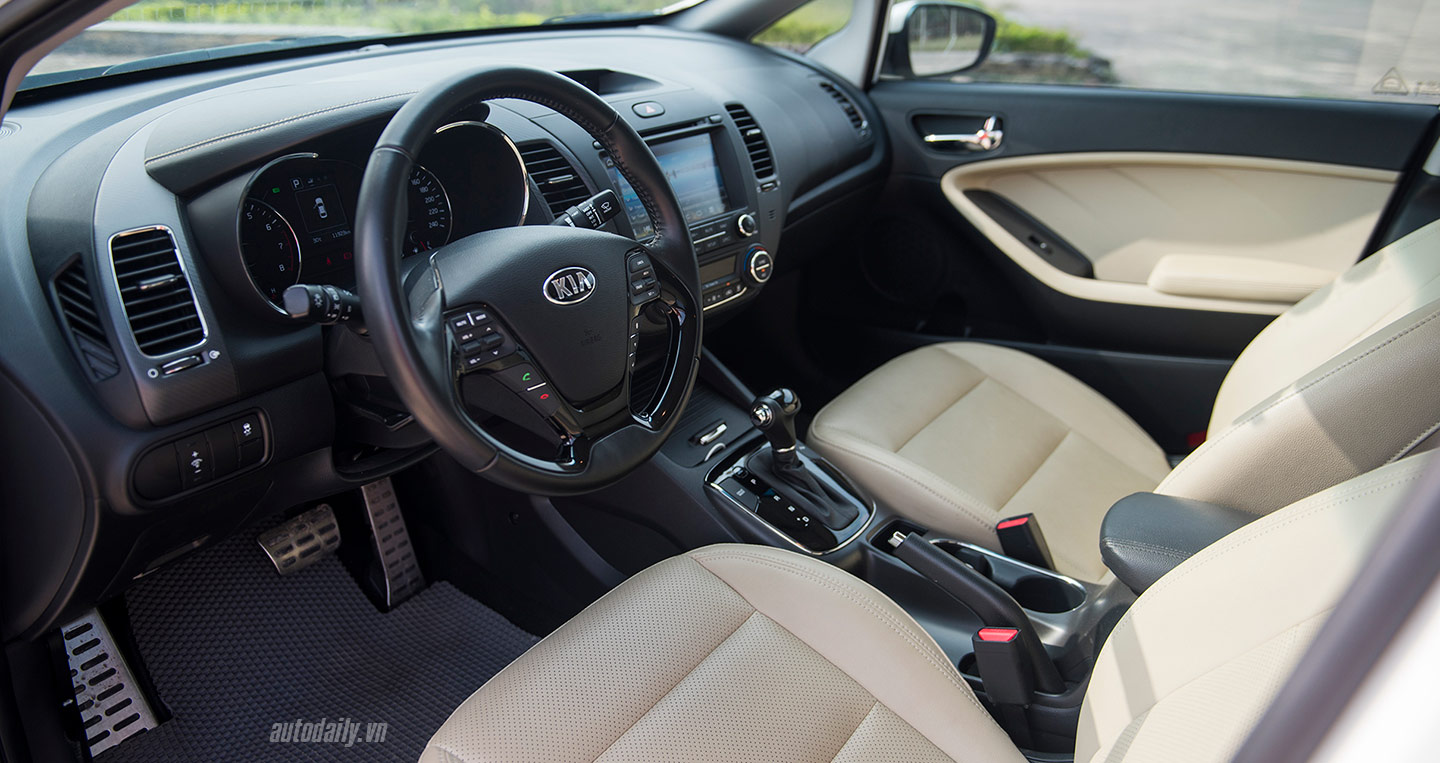 We must affirm that the interior and features of the Cerato have left us extremely impressed.
We must affirm that the interior and features of the Cerato have left us extremely impressed.
If we talk about the features that please customers, the Cerato 2.0 scores nearly 10 points. The smart keyless entry/lock function, start/stop ignition, easy access seat that automatically moves back when turning off the engine for easier entry/exit, memory function for the driver’s seat with 2 positions, 8-way power-adjustable driver’s seat with lumbar support. Along with these are a series of other features on the car, such as Cruise Control, USB and AUX connectivity, dual-zone independent air conditioning, a large LCD screen (although the resolution is low and the touch quality is average)… These are the features that score high points in the effort to win customers over.
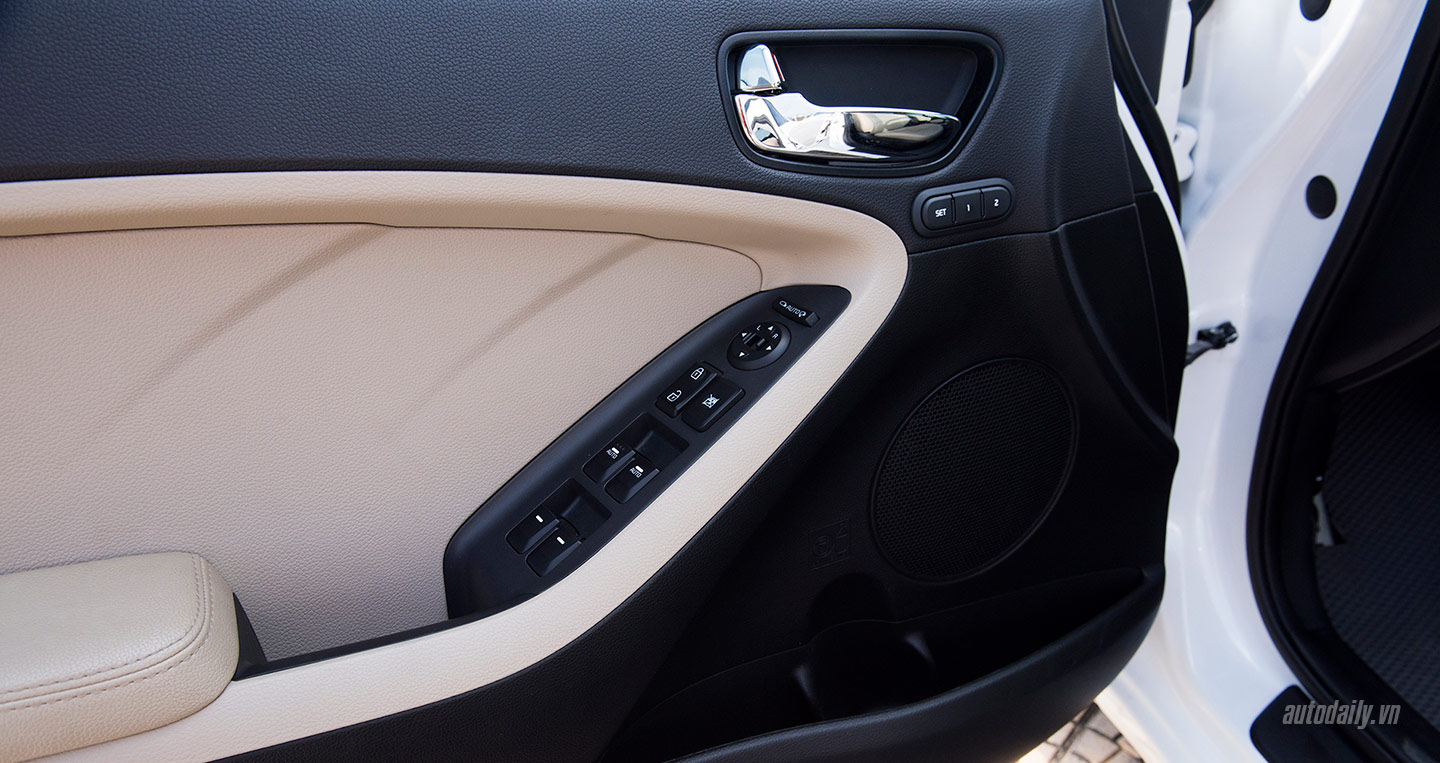
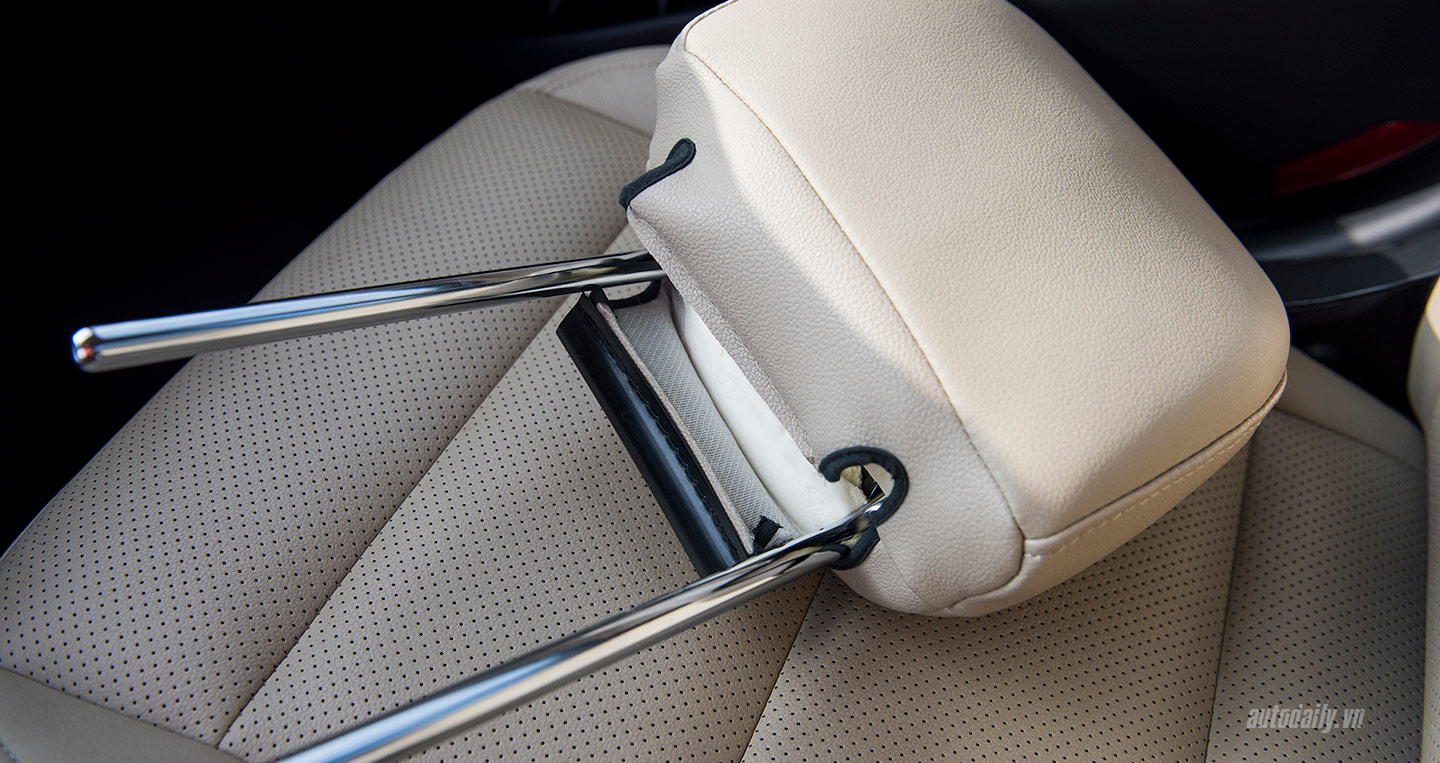 The quality of the finishing is regrettable as the headrests of the seats are prone to peeling off the leather cover and it is very difficult to reassemble them.
The quality of the finishing is regrettable as the headrests of the seats are prone to peeling off the leather cover and it is very difficult to reassemble them.
The dashboard has a beautiful design, from the steering wheel to the instrument cluster displaying RPM, speed, and menu controls, which are all easy to use. The interior plastic quality is at an acceptable level and suitable for the price of the product. The car is equipped with an automatic door lock function when the speed exceeds 20 km/h, and the Cerato 2.0 is also very intelligent when in the dark, if you get out of the car and lock the door, the pathway lights will remain on for about 5-10 seconds to illuminate the road for you.
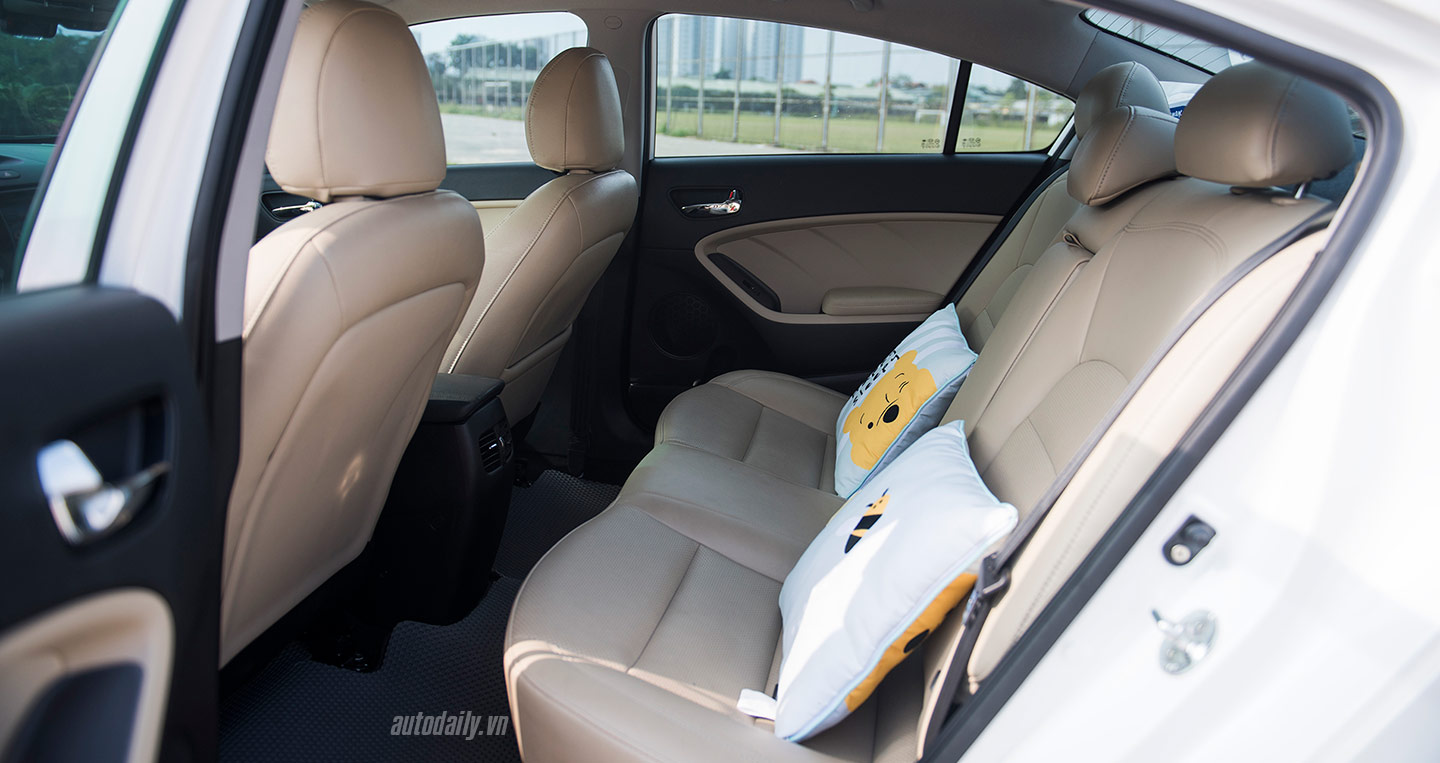
In terms of overall interior convenience, the Cerato 2.0 has a significant advantage over its competitors in the same segment.
Performance and safety equipment
The Cerato 2.0L variant is powered by a Nu engine with a power of 159 horsepower at 6,500 rpm and a maximum torque of 194 Nm at 4,800 rpm, combined with a 6-speed automatic transmission.
In terms of driving feel, as the car is equipped with 3 driving modes: Eco/Normal/Sport, each road and individual preference will have different feelings. The Normal mode is suitable for crowded urban streets, the Eco mode is fuel-efficient and suitable for open roads such as highways, while the Sport mode provides a heavier steering feel and is suitable for acceleration and driving on hilly roads. However, the steering feel is quite light overall, and the car is more suitable for women when driving in the city. Women may prefer the gentle feel of the steering wheel, even if the feeling is not real.
Some after-use impressions include the fact that the car’s suspension is noisy when driving on rough roads or roads with large roughness. The lane changing ability at high speeds or when slaloming is not really impressive as the responsiveness of the body to steering inputs is not high.
On the highway, the Sport mode provides better acceleration, but the engine noise is quite noticeable. The average fuel consumption in the city is from 9.5 to 10l/100km. When driving on the highway, the fuel consumption decreases by 2-3 liters compared to city driving.
Safety features are also given great importance by Kia on the Cerato, such as anti-lock braking system (ABS), emergency brake assist (BA), vehicle stability management (VMS, 2.0L version), electronic stability control (ESP, 2.0L version), hill-start assist control (HAC), 6 airbags, reverse camera, anti-theft system, remote keyless entry, automatic trunk opening, smart start-stop ignition… These features are highly appreciated by customers.
Review
Some say, “When hearing about German or Japanese cars, we give them a score of 10, but when we buy and use them, they only meet 9 points, so it’s a bit disappointing. However, when it comes to Korean cars, they are scored 6, but when we buy and use them, we get 7 or 8 points, so we are satisfied.” The same goes for the Cerato, despite its limitations as I mentioned at the beginning of the article, we have to admit that this model has many advantages.
 Despite its limitations as I mentioned at the beginning of the article, we have to admit that this model has many advantages.
Despite its limitations as I mentioned at the beginning of the article, we have to admit that this model has many advantages.
What about you? What are the pros and cons of the Kia Cerato in your opinion? Please share with us in the comments below the article. Thank you for following our article. Don’t forget to subscribe to our YouTube channel (link: https://www.youtube.com/channel/UC5UlfEOSpZ3ArUkNrlA8pQg) and fanpage (link: https://www.facebook.com/Autodaily/) to continuously update the latest videos about cars in the Vietnamese market.
Autodaily’s test results for the Kia Cerato 2.0 using RaceLogic equipment
– Price: Cerato 2.0AT: 671,000,000 VND
– Dimensions (L x W x H): 4,560 x 1,780 x 1,445 mm
– Curb weight (unloaded): 1,320 kg
– Engine: 2.0L, 159 horsepower at 6,500 rpm, 194 Nm torque at 4,800 rpm
– Transmission: 6-speed automatic
– Acceleration: 0-100 km/h: 10.5 seconds
– Braking distance 100-0 km/h: 41.7 meters
– Braking time 100-0 km/h: 3.3 seconds
– Fuel consumption: 9.5-10l/100km (city)
Le Hung (forum.autodaily.vn)

























